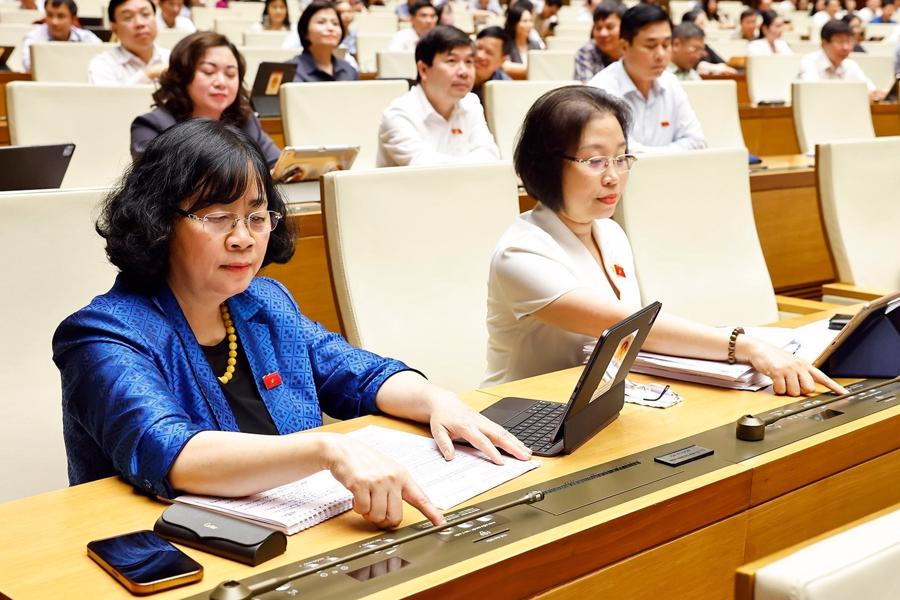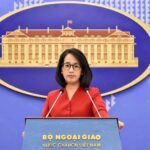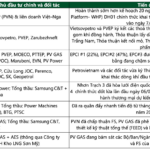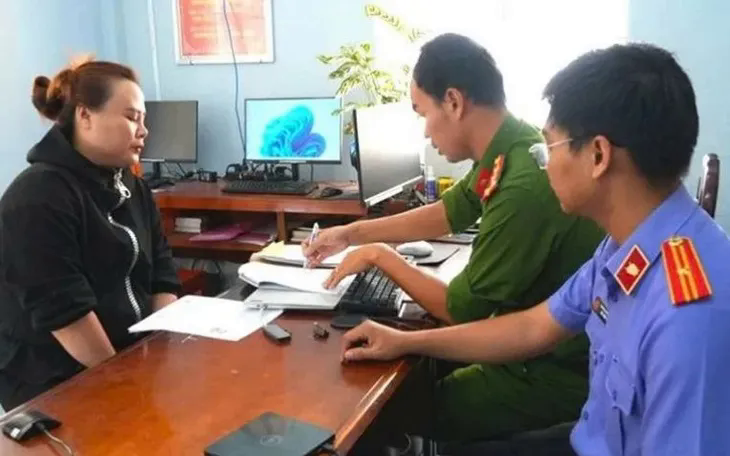On June 16th, with a unanimous vote of approval from all attending National Assembly delegates, Vietnam’s National Assembly passed the amended Law on Local Government Organization.
The law embodies an innovative mindset aimed at achieving modern local governance, fostering development, unblocking bottlenecks, and unleashing resources to meet the fast and sustainable growth goals of localities and the entire country in this new era.
CLEAR DEFINITION OF TASKS, AUTHORITY, AND ORGANIZATIONAL STRUCTURE FOR EACH LEVEL OF GOVERNMENT
In her report on the adoption of the Law, Minister of Home Affairs Pham Thi Thanh Tra stated that the Law establishes a two-tier model of local government organization (provincial and communal levels) nationwide, with clear distinctions in tasks, authority, and organizational structure for each level. It also provides a comprehensive legal framework for the local government model in special administrative-economic units.
The government has refined and supplemented the provisions on administrative units, and the principles of organization and operation of local governments to ensure a streamlined, efficient, effective, and citizen-centric approach. These changes embody the principle of “local decision-making, local action, and local accountability,” encouraging the proactiveness, creativity, autonomy, and self-responsibility of local governments.

To institutionalize the viewpoints and directives of the Central Committee, the Politburo, and the Party Secretariat, the draft Law has refined the principles of authority distribution, decentralization, and delegation between the central government and local governments, and between provincial and communal authorities. It also clearly defines the authority of the collective People’s Committee and the individual Chairman of the People’s Committee, facilitating flexible and efficient governance while encouraging the initiative and creativity of local government leaders.
Furthermore, the government has refined and supplemented the provisions on authority distribution, decentralization, delegation, and monitoring. Specifically, they added the subjects of delegation as the People’s Councils and Chairmen of the People’s Committees at the provincial level. They also incorporated a monitoring mechanism to promptly adjust the content of decentralization and delegation.
Additionally, the Law empowers the Chairmen of the People’s Committees at the provincial level to directly oversee and manage matters within the tasks and powers of specialized agencies, other administrative organizations at their level, and the People’s Committees at the communal level. This ensures that administrative procedures for citizens and businesses are not stalled, bottlenecked, or inefficient.
PROVINCIAL CHAIRPERSON HAS 23 GROUPS OF TASKS AND POWERS, COMMUNAL CHAIRPERSON HAS 17
Minister Pham Thi Thanh Tra also shared that, based on the principles of authority distribution, the Law has comprehensively redesigned the tasks and powers of local governments at the provincial and communal levels. This ensures clear distinctions, avoiding overlaps and conflicts, in line with modern local governance models. Moreover, it provides a legal basis for specialized laws to specify the tasks and powers of local governments in various sectors.
The government has reviewed and refined the provisions on local governments at the provincial and communal levels, adjusting some tasks and powers of the People’s Committees to the Chairmen (12 groups of tasks and powers for provincial People’s Committees and 23 for their Chairmen; 10 groups for communal People’s Committees and 17 for their Chairmen).
The Law also supplements the provision that the Chairman of the People’s Committee can decide on the tasks and powers of the People’s Committee (except for matters requiring collective discussion) and report to the People’s Committee at its nearest session.

According to Minister Pham Thi Thanh Tra, “This is a bold reform that emphasizes the responsibility of leaders, creating momentum for innovation in local governance.”
“These provisions in the Law will ensure the promotion of proactiveness, creativity, flexibility, and enhanced responsibility of the Chairmen of the People’s Committees. They will also improve the effectiveness of state administration and management at the local level, meeting practical requirements,” emphasized Minister Pham Thi Thanh Tra.
Regarding the organization and operation of local governments, the Law stipulates that the People’s Councils at the communal level will have two committees: the Economic-Budget Committee and the Culture and Society Committee. It maintains the number of delegates in the People’s Councils at the provincial and communal levels within the minimum and maximum ranges (Ho Chi Minh City and Hanoi will have 125 delegates each).
The Law also stipulates that the Chairpersons, Vice-Chairpersons, Heads, and Deputy Heads of the People’s Councils at the provincial and communal levels, as well as the members of the Committees of the People’s Councils at the provincial level, can be full-time delegates. It delegates the Standing Committee of the National Assembly to specify the number of Vice-Chairpersons and Deputy Heads of the People’s Councils at the provincial and communal levels and to arrange full-time delegates accordingly.
According to the Ministry of Home Affairs, this ensures flexibility and adaptability to the country’s and localities’ realities at different stages of development. It also allows for adjustments without the need to amend these provisions in the Law when new directions are provided by authorized agencies.
The transition from a three-tier to a two-tier model of local government is a significant and historic reform. To ensure continuity, smoothness, and stability during this transition, the Law comprehensively and prospectively regulates organizational structure, personnel arrangements, administrative procedures, and operating mechanisms.
The Law also includes transitional provisions for the conversion of wards in Hanoi, Ho Chi Minh City, and Danang to the local government model (currently with only People’s Committees and no People’s Councils) to the full local government model (with both People’s Councils and People’s Committees) by July 1, 2025, ensuring seamless and efficient operation.
Transitional provisions ensure uninterrupted work and the smooth resolution of administrative procedures for citizens and businesses during the transition. They also address the handover of tasks and documents from the district-level local governments after they cease operations.
Notably, to promptly handle unforeseen situations not covered by existing laws, the Law establishes a flexible mechanism authorizing the Standing Committee of the National Assembly, the Government, the Prime Minister, ministers, heads of ministerial agencies, People’s Councils, and People’s Committees at the provincial level to consider and issue documents to resolve issues arising from the implementation of the two-tier model of local government organization stipulated in this Law.
“Vietnam: The Rising BRICS Partner”
“The Vietnamese Ministry of Foreign Affairs responds to media inquiries regarding Brazil’s announcement of Vietnam’s official accession as a BRICS partner: Unveiling Vietnam’s Strategic Alliance.”
“Vietnam Strikes Oil: Significant Progress in Key Projects, Lo B O Mon and Kho LNG.”
“With domestic gas supplies rapidly declining, the development of new fields and the importation of LNG are imperative to ensure energy security.”





















